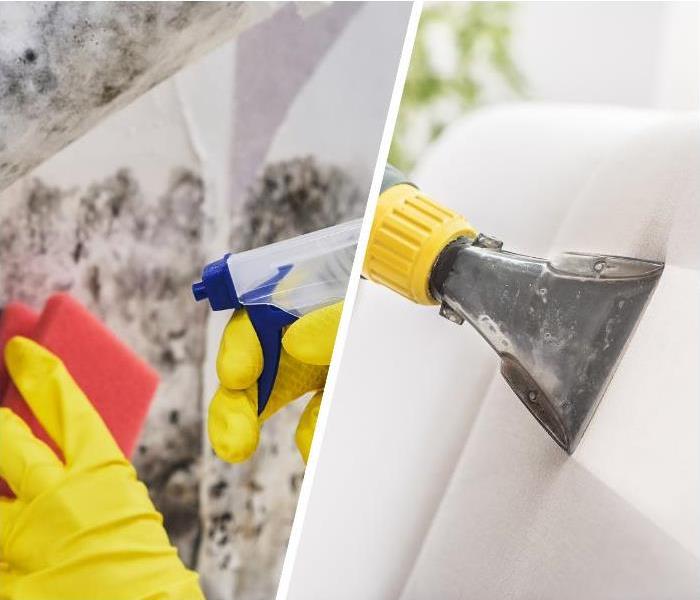3 Essential Steps for Deep Cleaning Your Home After a Flood
8/31/2024 (Permalink)
Floods can be devastating, causing damage to homes and belongings while leaving behind a mess that can be challenging to clean. After ensuring your safety and addressing immediate concerns, the next crucial task is to deep clean your home to prevent further damage and restore it to its pre-flood condition. Here are three essential steps for deep cleaning your home after a flood:
1. Safety First: Assess and Prepare
Before diving into the cleaning process, it’s vital to prioritize safety. Floodwaters can carry harmful contaminants, and the risk of mold growth increases once the water recedes. Here’s how to start safely:
Inspect the Damage: Carefully assess the extent of the damage. Look for structural issues, such as warped floors or compromised walls, and check for hazards like exposed electrical wires. If the damage appears extensive, consider consulting a professional restoration service.
Wear Protective Gear: Equip yourself with safety gear, including gloves, masks, and waterproof boots. Floodwater can contain harmful bacteria, chemicals, and debris, so protection is crucial.
Turn Off Utilities: Ensure that the electricity and gas are turned off before you start cleaning. This prevents electrical hazards and further damage to your home’s systems. Contact a professional if you’re unsure how to safely turn off utilities.
Document the Damage: Take photos or videos of the damage for insurance purposes. This documentation will be valuable when filing claims and seeking compensation for repairs and replacements.
2. Remove and Clean Contaminated Items
Floodwaters can leave behind debris and contaminants that pose health risks and contribute to further damage. Efficiently removing and cleaning affected items is essential to restore your home. Here’s how to proceed:
Remove Standing Water: Use pumps, wet vacuums, or mops to remove any remaining water from floors and surfaces. Ensure the area is as dry as possible to prevent mold growth.
Discard Contaminated Items: Items such as carpets, furniture, and personal belongings that cannot be thoroughly cleaned and disinfected should be discarded. Mold and contaminants can be challenging to remove from porous materials.
Clean and Disinfect: For items that can be salvaged, thoroughly clean and disinfect them. Use a mixture of water and detergent to clean surfaces, followed by a disinfectant solution to kill bacteria and mold spores. Pay special attention to areas that were in direct contact with floodwater.
Dry Everything Thoroughly: Proper drying is crucial to prevent mold growth. Use fans, dehumidifiers, and open windows to enhance ventilation and accelerate drying. Ensure that all affected areas, including walls and floors, are completely dry before moving on to repairs.
3. Repair and Restore Your Home
Once your home is clean and dry, the next step is to address any repairs and restoration needed to bring it back to its pre-flood condition. This process involves:
Assess Structural Damage: Inspect walls, floors, and ceilings for damage. Look for signs of warping, cracking, or swelling. If you notice significant damage, consult a professional contractor to evaluate the repairs needed.
Address Mold and Mildew: Mold can begin to grow within 24-48 hours of water exposure, so it’s essential to address any signs of mold promptly. If you spot mold, use a mixture of water and detergent to scrub affected areas. For extensive mold problems, consider hiring a mold remediation specialist.
Repair and Replace: Begin repairing damaged structures and replacing any items that were beyond cleaning. This may include installing new drywall, replacing flooring, or fixing damaged insulation. Ensure that repairs are completed to a high standard to prevent future issues.
Prevent Future Flooding: To reduce the risk of future flooding, consider implementing preventive measures such as installing sump pumps, sealing basement walls, and elevating electrical appliances. Regular maintenance and inspection of your home’s drainage systems can also help prevent future water damage.
Deep cleaning your home after a flood is a crucial process that requires careful attention to detail and safety. By following these three essential steps—assessing and preparing, removing and cleaning contaminated items, and repairing and restoring—you can effectively address the aftermath of a flood and restore your home to its original condition. Remember, while these steps provide a general guide, each flooding situation is unique, and you may need to consult professionals for extensive damage or specialized tasks. At SERVPRO® , we understand the challenges of flood damage and are here to help you every step of the way, ensuring your home is clean, safe, and restored.






 24/7 Emergency Service
24/7 Emergency Service